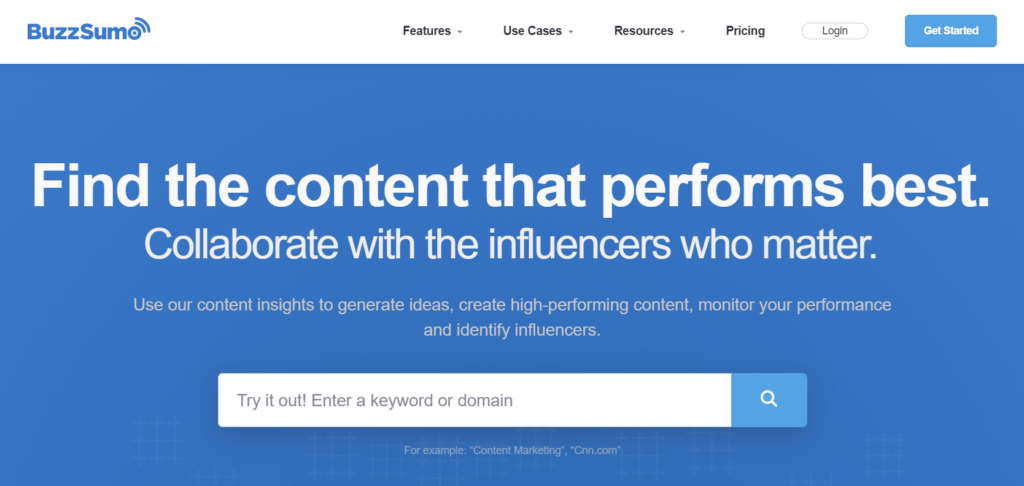
Small businesses often run into the same problem when it comes to creating content — time.
Who has the time to create and promote interesting, engaging content on a daily basis, while also selling their product or service?
Fortunately, you can relieve the burden by making content curation part of your content marketing strategy. Content curation is the practice of selecting and sharing existing content with your audience, while also adding your own input.
No, I am not absolving you of ever creating your own content. You should still be writing your own blogs, sharing original social media content, and making videos. But curating content does provide a great supplement to what you’re already creating. It’s a great way to:
- Share the wisdom of others (aka it’s not all about you)
- Keep your finger on the pulse of what is happening in your field
- Grow your network by engaging with other content creators
But there are some things to keep in mind when working on a content curation strategy. First of all, we’re calling it content curation for a reason. It’s not a content grabbag. Anyone can share random content from across the internet. You need to make sure that you’re sharing high-quality, interesting content that is also relevant to your audience.
Also, you want to make sure the content you’re sharing is timely. An article about SEO will be nearly useless if it wasn’t written in the past 12 months.
Here are some tools and ideas that you can use to start putting together your own content curation strategy.

Content Curation Tools
There are a number of useful tools that will make your content curation easier and more streamlined. Here are a few to get you started.
Feedly
Feedly is a brilliant tool that will help you to keep track of all of your favorite bloggers, industry sites, and feeds. With a free account, you can add individual sites to specialized news feeds, letting you see all the new posts from the movers and shakers in your industry. You can also save the best content for later sharing.
Buzzsumo

Buzzsumo is a great way to figure out what your audience is interested in. It lets you see how often articles have been shared, and across what platforms. If an article that’s been out for several months only has a few shares, it may not be worth including in your content curation strategy.
Google Alerts
Google Alerts let you automatically monitor the internet for whatever names or terms you request. You can do keyword monitoring or get notified of mentions of specific brands.
Make sure your keywords are very specific, or you could get bombarded with more alerts than you could possibly sift through.
Evernote
Think of Evernote as an online scrapbook. It’s a simple, one-click way to save content from across the web into easily organized “notebooks.” With a free account and installed web extension, you can “clip” an article or screenshot to your collection for later use.
There are dozens of content curation tools, but these are a few of the most popular that you can use to get started. But once you start collecting content, what should you do with it?
Content Curation Ideas

Content curation doesn’t have to include creation. But sometimes, it’s worth it to turn all that great information into something new. See if you can work some of these ideas into your upcoming content schedule.
Social Shares
At its most basic, content curation can just be a retweet or a Facebook share. But remember that curation needs to include something from you. Add your own thoughts on the topic, or ask your audience a thought-provoking question. You want to start a conversation, not just prove that you know how to hit the share button.
Infographics
Infographics are a form of content curation. By collecting data and research and sharing it in one easy-to-view infographic, you’re creating a digestible and ultra-sharable piece of content, without having to do the research yourself.
Just make sure to give attribution back to the original sources.
Comments
Use your own comments section as a source of curated content. If you posted something that got a lot of comments, collect them in a blog post or graphic to continue the conversation.
Photo Collections

This is a very popular method of content curation. Just look at sites like Buzzfeed. They gather photos and videos from all over the web and combine them into visual “listicles” that are majorly popular — and shareable.
Expert Quotes
People love to know what industry experts think. They’re the guiding light that everyone else looks to for wisdom and expertise — which is why expert quotes are so popular. Curate expert quotes from across the internet into one big article. But make sure the quotes are all about the same thing, such as the future of the industry.
Final Notes

After you’ve started posting curated content, monitor what you share to see how it performs. Your audience will tell you what they like and what they don’t. If you think they want science-based articles, but you got record shares and comments on something funny, it’s time to pivot your strategy.
And finally, make sure that the content you share isn’t behind a paywall. Just because you have a Wall Street Journal subscription doesn’t mean that much of your audience does. Sharing tantalizing content that can’t be accessed will just irritate your followers.
By adding content curation to your content marketing strategy, you’ll be able to spread your original content further, while providing a more interesting collection to your devoted fans and positioning yourself as an industry expert. It’s an essential part of a well-rounded social marketing plan.





